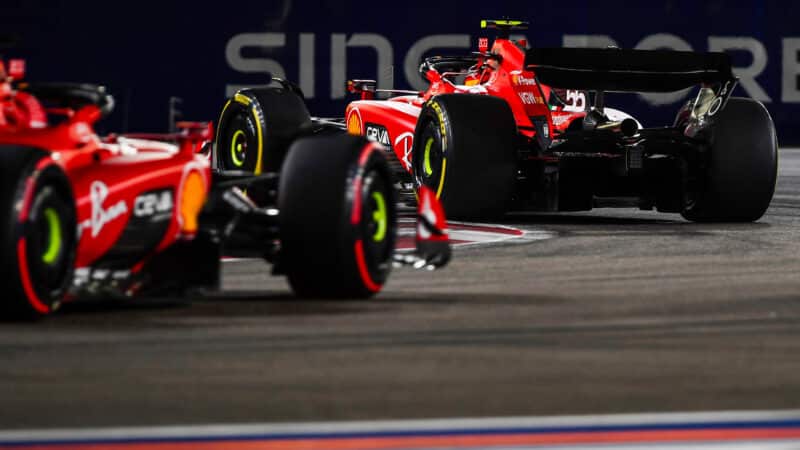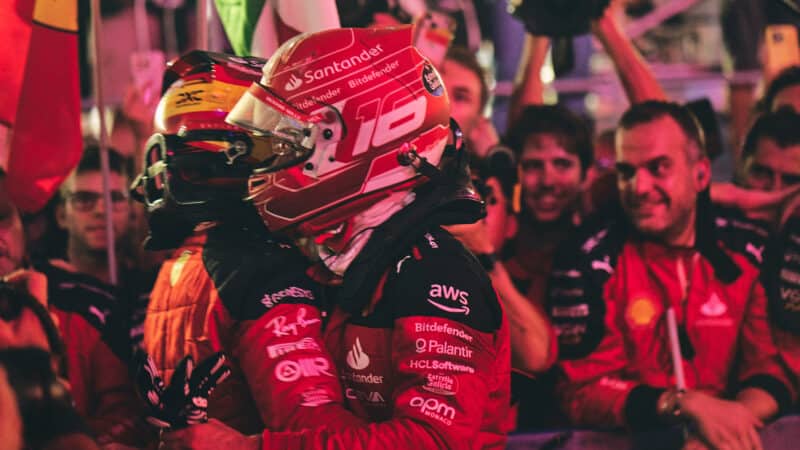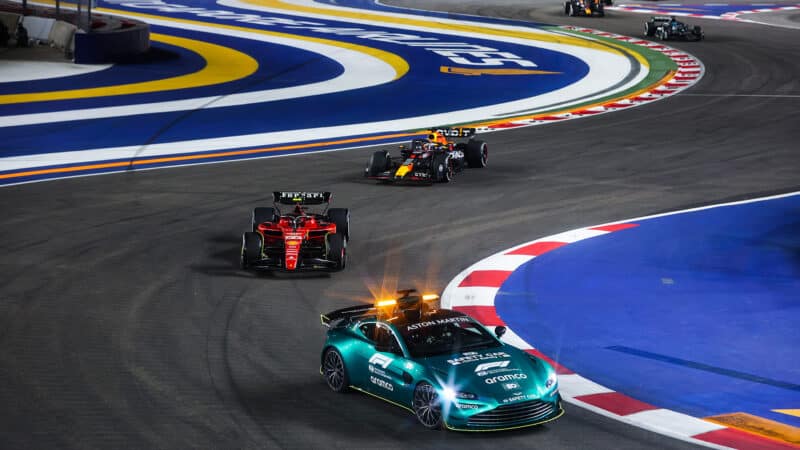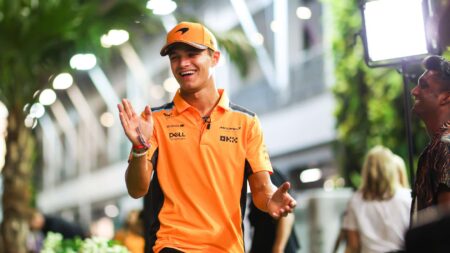But why was it Leclerc – a driver who has held a small but definite advantage over Sainz in their three seasons together – in the support role? Sainz had been faster at the previous two races of Monza and Zandvoort too and this was his second consecutive pole. The trend is definitely with him. There was a test at the mid-point of the season where Sainz finally got the team to agree to try a set-up direction he’d been pushing for ever since first driving the SF-23 and its nervy rear end. Because it seemed to have a built-in aerodynamic inconsistency at the rear, Sainz suggested engineering in a false understeer balance so that he could at least have confidence to push. It worked for him – and for the car.
For Leclerc, not so much. “I’m not completely comfortable with the car at the moment,” he said in Singapore. “A bit too much understeer for my liking and I struggle to drive around it. Because of the unpredictability of the car, I cannot have the oversteer that I want. Because of this rear-end unpredictability we cannot run with a lot of front because then whenever you have a snap, you lose a lot of grip from the car and it’s just very difficult to manage. It’s not that it’s an understeery car but you have to put understeer in to make it predictable.”

Current balance suits Sainz. but is a struggle for Leclerc
Ferrari
It illustrates how small the differences are between them and how the effect of different car traits can have a far bigger effect on lap times than any difference in raw ability. Sainz says he has felt comfortable in the car since around the time of the Spanish Grand Prix but that there was still something missing.
Sainz: “In the summer break I sat down with my engineers and said ok what do we do to start putting the whole weekend together better because clearly we have a lot of pace. We are doing some good things but not putting the whole thing together. What can we do to improve that and have consistent performances? Zandvoort was a very good weekend, Monza was almost perfect and here was perfect. When you work and analyse and you have the speed it pays off.”






